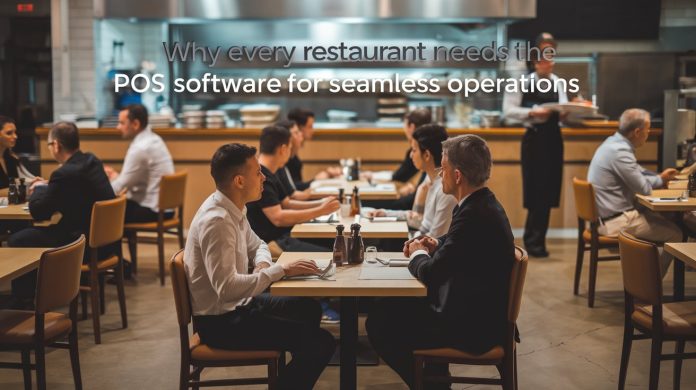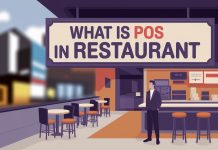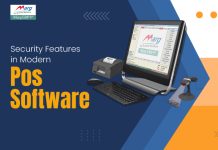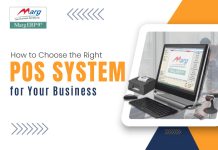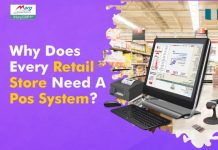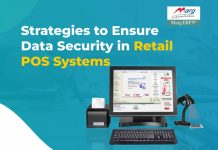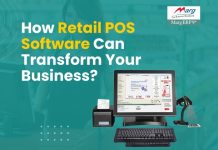Running a restaurant successfully involves much more than just serving delicious food. It requires effective management of various processes like order taking, billing, inventory management, customer satisfaction, and staff coordination. This is where a Point of Sale (POS) system becomes an essential tool. A POS system simplifies these operations, making it an integral part of modern restaurants.
What is POS?
A Point of Sale (POS) system is a combination of hardware and software that facilitates sales transactions. In simple terms, it is the system where customers pay for the services or products they receive from your business. For restaurants, a POS system goes beyond just billing. It streamlines the entire operational workflow, from order management to tracking sales and generating reports.
A POS system typically includes hardware components like a computer or tablet, barcode scanner, receipt printer, and card payment terminal, along with software that handles order processing, inventory management, and customer data. In a restaurant setting, it connects the front-of-house staff with the kitchen and back office, ensuring smooth communication and operations.
Why is a POS System Important for Restaurants?
Managing a restaurant is a complex task, and relying on manual processes can lead to errors and inefficiencies. A POS software for restaurants ensures seamless management by automating critical tasks, offering real-time data, and improving customer satisfaction.
Here’s why restaurants need a POS system:
- Streamlined Operations: POS software integrates order taking, kitchen communication, and billing into one system. This ensures that orders are accurately transmitted from the waitstaff to the kitchen, reducing errors and delays.
- Inventory Management: Tracks ingredient usage and stock levels to prevent shortages or wastage. By monitoring inventory in real time, you can forecast future requirements and avoid overstocking.
- Improved Customer Experience: Faster service and accurate billing enhance customer satisfaction. Customers appreciate efficient service, and a POS system helps ensure they have a smooth experience from ordering to payment.
- Data Insights: Sales reports and analytics help in making informed business decisions. With detailed insights, you can identify popular menu items, peak hours, and overall sales performance.
- Staff Management: Tracks employee working hours and performance, making it easier to schedule shifts and evaluate productivity. It also helps in reducing theft or pilferage by maintaining accurate records of transactions.
Types of POS Systems for Restaurants
Restaurants have diverse needs depending on their size, type, and operational model. Here are the common types of POS systems available:
On-Site POS Systems
These are traditional systems installed on-premises, usually involving hardware like desktop computers and servers. On-site POS systems are highly reliable and customizable but can be expensive to set up and maintain. They are ideal for large restaurants or businesses that prefer to keep all data on local servers for security reasons.
Cloud-Based POS Systems
Cloud-based POS systems store data online, offering flexibility and accessibility. These systems are gaining popularity, especially among small and medium-sized restaurants. They allow restaurant owners to access data and reports remotely, manage multiple locations seamlessly, and receive automatic software updates without the need for costly IT infrastructure.
Mobile POS Systems
Mobile POS systems run on devices like tablets or smartphones, allowing staff to take orders and process payments on the go. These are ideal for quick-service restaurants, food trucks, or establishments with limited space. Mobile POS systems enable staff to serve customers directly at their tables, improving service speed and accuracy.
All-in-One POS Systems
These systems combine hardware and software, providing a comprehensive solution for restaurants. They include features like kitchen display systems, inventory management, and customer relationship management (CRM). All-in-one systems are versatile and can cater to both small cafes and large restaurant chains.
Key Features of a POS System for Restaurants
When choosing the best POS software, ensure it includes the following features:
Order Management
Efficiently handle dine-in, takeaway, and online orders through a centralized system. The system ensures that orders are accurately recorded and sent to the appropriate kitchen stations.
Billing and Payment Processing
Generate accurate bills and accept multiple payment methods, including cash, cards, and digital wallets. This flexibility ensures a seamless checkout process for customers, reducing wait times.
Inventory Tracking
Monitor stock levels in real time to prevent overstocking or running out of essential ingredients. The system can also alert you when stock levels are low, helping you restock on time and avoid disruptions.
Table Management
Optimize table allocation and track the status of each table during busy hours. With table management, staff can view which tables are occupied, reserved, or available, improving seating efficiency and customer satisfaction.
Reporting and Analytics
Access detailed sales reports, customer trends, and performance metrics to make data-driven decisions. Analytics can help you identify areas for improvement and opportunities to increase revenue.
Integration with Third-Party Apps
Seamless integration with food delivery platforms, accounting software, and CRM tools enhances efficiency. For example, integrating with platforms like Swiggy or Zomato can streamline online order processing.
Multi-Outlet Management
For restaurant chains, POS software should offer centralized control over multiple locations. This allows owners to monitor sales, inventory, and staff performance across all outlets from a single dashboard.
Benefits of Using POS Software in Restaurants
Using a POS system provides numerous advantages that improve overall business efficiency and profitability. Here are some key benefits:
Improved Accuracy
Eliminates manual errors in order taking and billing, ensuring smooth operations. Accurate records also help in maintaining transparency and avoiding disputes with customers.
Faster Service
Automated processes reduce waiting times for customers, enhancing their dining experience. Quick order processing and payment handling are crucial during peak hours.
Enhanced Inventory Management
Tracks stock levels and predicts future requirements, reducing wastage. By understanding usage patterns, you can optimize inventory and save costs.
Cost Savings
By streamlining processes and reducing errors, POS software helps save money in the long run. It also reduces the need for manual labor in repetitive tasks, cutting down operational costs.
Better Customer Insights
Understand customer preferences and spending habits to create personalized offers and loyalty programs. This can help improve customer retention and increase revenue.
Scalability
A POS system grows with your business, making it suitable for both small cafes and large restaurant chains. You can add features or modules as your needs evolve.
Choosing the Best POS Software for Your Restaurant
When selecting a POS system, consider the following factors:
- Ease of Use: Ensure the software is user-friendly and easy to train staff on. Complicated systems can lead to errors and frustration.
- Customization: Look for features tailored to your restaurant type, such as table management or kitchen display systems. Customization ensures the system meets your unique operational needs.
- Integration Capabilities: Choose software that integrates with other tools like food delivery platforms, accounting software, and loyalty programs. This helps streamline operations and reduce manual work.
- Cost: Compare the pricing of different POS software in India to find one that fits your budget. Remember to consider both upfront costs and recurring expenses.
- Customer Support: Opt for a provider that offers reliable customer support and regular updates. Quick support is essential to resolve technical issues and avoid downtime.
In conclusion,
A Point of Sale (POS) system is an indispensable tool for modern restaurants, offering a wide array of benefits that streamline operations, improve efficiency, and boost customer satisfaction. From order management to inventory tracking and staff coordination, POS software helps restaurant owners manage day-to-day activities seamlessly. Whether you’re looking to reduce manual errors, enhance service speed, or gain valuable business insights, investing in a good POS system is crucial for growth and profitability. By selecting the right POS software tailored to your restaurant’s needs, you can ensure smoother operations, better customer experiences, and long-term success in the competitive hospitality industry.
Frequently Asked Question
What is a restaurant POS system?
A restaurant POS system is a tool that helps manage operations like billing, order tracking, inventory, and customer data. It simplifies processes and improves efficiency.
How does POS software improve restaurant efficiency?
POS software automates tasks like order management and billing, reduces errors, tracks inventory, and generates real-time reports, making restaurant operations seamless.
Which is the best POS software for restaurants in India?
The best POS software depends on your needs. Popular options include Marg POS, Petpooja, and Posist, known for their advanced features and user-friendly interfaces.
What features should I look for in a POS system?
Key features include order management, billing, inventory tracking, table management, reporting, and integration with third-party apps.
Is a cloud-based POS system better than an on-site system?
A cloud-based POS system offers flexibility, remote access, and easy updates, making it a better option for many restaurants compared to on-site systems.

